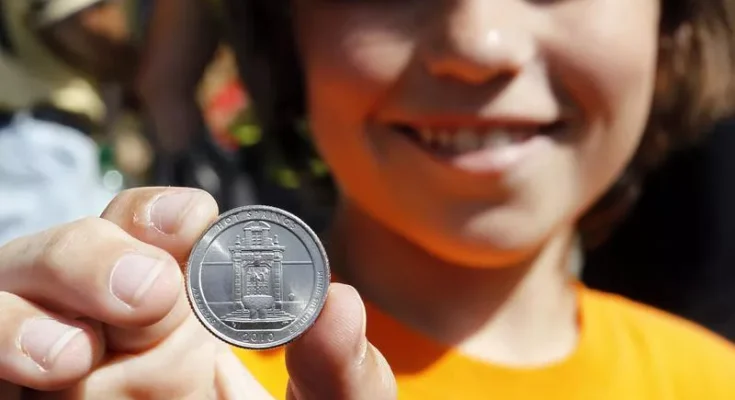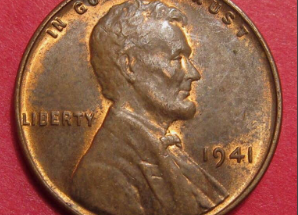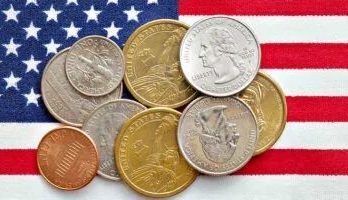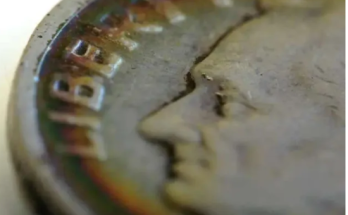Maybe you’ve read about a single coin that sold for $1 million. Perhaps you found a coin from the 1800s or earlier, or maybe you’ve inherited a collection of coins. How can you tell which coins are worth money? Once you’ve found a rare coin that’s valuable, how do you sell old coins?
This is not as difficult as it may seem. Make a habit of looking at your coins. If you know what an everyday coin looks like, you are more likely to notice when one is a little different. Set aside those that look different until you have time for a closer examination.
It’s not likely you have a $1 million coin in your pocket, but if you were given a collection, some of those coins might have significant value. (If you have a complete set, they may be worth more together.) To determine this, says Rod Gillis, the education director at the American Numismatic Association, “You have to look through every one of them.”
Here’s how to investigate, learn what coins are wanted by collectors, and what to do if you find a coin of value.
Consult the ‘Coin Bible’
:quality(80)/granite-web-prod/f6/23/f62393f502064420b57c18db3877ed69.jpeg)
The annual A Guide Book of United States Coins is known in collecting circles as the “Red Book.” This book can give you a ballpark figure of what your coins are worth.
Gillis describes it as “sort of the bible of United States coins. There’s probably no serious collector out there that does not have a copy,” adding that it’s available in both hardcover and spiral bound forms, with the latter being less expensive and easier to use. The Red Book, he says, “lists the average retail price of every United States coin, based on grade. [It] gives you a really basic idea of how to look for particulars for technical grading, and is written in a way that you don’t have to be numismatically savvy to understand it.”
It’s important to note that the book provides retail values, not wholesale, which is what dealers would typically pay.
Look for Errors
:quality(80)/granite-web-prod/88/65/88659495199d493babedf7f75d3b06fd.png)
Even slight differences can make a coin more valuable than its face value. Look for die cracks and missing elements. Pay special attention to the words and edges of images. Look for strike mistakes such as doubling, cracks or missing sections.
Tilting the coin in the light may pick up errors you don’t see head-on. Flip the coin from top to bottom. The reverse side should be right-side-up. Those that are “out of rotation” are slightly more valuable than “perfect” coins.
Check the edge. Does it have appropriate edges, or for those with words on the edge, are they all there? There are known errors in coins of certain types and years. Become familiar with these common errors to help you quickly identify them.
Look at Mint Marks
:quality(80)/granite-web-prod/d7/b9/d7b9e883e6e74a5394c68613da6a8fc0.png)
For most U.S. coins, this will be on the obverse (or head side) of the coin, but certain older coins have the mint marks on the reverse. Coins minted in Philadelphia often lack a mint mark. Some coins were produced at some mints but not others, or may have been made in varying quantities. Where a coin was minted sometimes greatly influences its value.
Here’s an alphabetical breakdown of the U.S. Mint locations, dates and mint marks used:
- Carson City, Nevada (1870 – 1893). Mint mark: CC
- Charlotte, North Carolina (1837 – 1861). Mint mark: C
- Dahlonega, Georgia (1838 – 1861). Mint mark: D
- Denver (1906 – present). Mint mark: D
- New Orleans (1838 – 1909). Mint mark: O
- Philadelphia (1793 – present). Mint mark: P or Nothing
- San Francisco (1854 – present). Mint mark: S
- West Point, New York (1984 – present). Mint mark: W
Look for Fakes
:quality(80)/granite-web-prod/e1/8f/e18f00a0d11447c9a819314640a4c26d.png)
For particularly rare coins, such as double-headed or double-tailed coins, consider whether it might be a fake. Look to see if there is any sign that two coins have been joined. While not common (or legal), it is possible to grind down one side of a coin and attach it to another to create a double-headed coin. Also known as “magician’s coins,” these are interesting and unique, but not valuable.
Do Your Research
:quality(80)/granite-web-prod/88/28/8828142e885449f0b4c1dfee4a8f099a.png)
There are no shortcuts. You have to learn about each coin individually. “The three variables that determine the value of a coin are: how many were minted, the grade or condition of the coin, and the demand,” Gillis said. When asked which is most important, he says, “probably the mintage number if I had to choose one of the three.”
Gillis says the organization often gets calls from people who are ready to retire and want to sell their coins. “They have a coin that they think is very rare, and we generally have to bring them back to reality,” he said. “They’re not nearly as happy when they hang up as when they initially call us.”
Organize Your Collection
:quality(80)/granite-web-prod/d4/1a/d41a05c87d38443696d48d853ab34c96.png)
First sort your coins by denomination, then by type. Each denomination has had a number of design changes over the past 200 plus years. After sorting them into design types, you can further narrow it down and sort them by year, mint and any variants you may discover. (For example, some 2005 nickels produced at the Denver mint have a gouge that runs through the bison’s back. These “speared buffalo” nickels may be worth hundreds of dollars.)
Have Your Coin Appraised
:quality(80)/granite-web-prod/d3/4d/d34de92af27045edb7458f3a262d1a52.png)
You can take the entire collection to a dealer to appraise, says Gillis, “but they charge by the hour.” He suggests you organize your coins and consult the Red Book on your own before going to a dealer. “If you can organize the collection in a very basic way, you’ll do two things,” he said. “You’ll lessen the time that an appraiser needs to look at the collection, and you can sort of cross out coins that would be rather common and not worth the time of having an appraiser look at them.”
Don’t Feel Obligated to Sell
:quality(80)/granite-web-prod/7d/16/7d165cba593941bfbc55d1f486a00a8f.png)
Dealers who are members of the American Numismatic Association promise to abide by a code of ethics. “If a dealer is willing to give you an offer for the collection, you don’t have to sell it to that particular dealer,” Gillis said, “There’s nothing wrong with going around to two or three dealers.”
You may be offered different prices, but that doesn’t mean anyone is trying to cheat you. “If you have a particularly rare coin and you take it to a dealer [who] just happens to have four of those exact coins that he’s hoping to sell, and a second dealer is looking for that coin because he doesn’t have any in stock and two of his best customers happen to be looking for that coin, which one is probably going to give you the better price?” he said. “It’s going to be the second one. There are variables in play that sometimes have nothing to do with a dealer trying to lowball you.”
‘Dirty’ Coins May Be More Valuable
:quality(80)/granite-web-prod/18/9a/189a671f37b2489bb7d1580e50769860.png)
Don’t clean your coins! In fact, this can reduce their value. New coins have a “luster” or sheen that can be seen when you tilt the coin into the light. Cleaning removes that luster and reduces a coin’s value.
Store Coins Properly
:quality(80)/granite-web-prod/0d/7d/0d7d1012e76548f4bc5b4d484e8a3dc6.png)
Coins are most valuable when they are in mint or near-mint condition. Storing them so they do not touch each other at all prevents scratches and helps to keep them looking their best.
There are a number of coin holders you can purchase such as coin flips, coin folders or albums. The cost can vary from pennies for a basic coin flip to hundreds of dollars to have a coin professionally graded and “slabbed.”
Like other valuable collectible items, make sure these holders are made of materials that will not damage the coin, such as Mylar and acid-free cardboard. Greater care should be taken with rare and expensive coins. It’s recommended that these be encapsulated by a third-party grading service.
Consider Having Coins ‘Graded’
:quality(80)/granite-web-prod/ba/ce/bace8232825c4a7b813d9ad49da82812.png)
“NCG and PCGS are third party grading companies,” said Gillis. “They grade, authenticate and slab (or encapsulate) coins. Not all coins are candidates for that. There’s an inherent cost in doing that and sometimes the value of the coins just doesn’t justify you doing that.”
However, he adds, “For some people, that’s how they want to have their coin stored, regardless of the value. In general, it’s wise to know the value of a particular coin before you send it to those companies.” In certain instances you’ll never be able to recoup that fee.
Handle With Care
:quality(80)/granite-web-prod/38/f1/38f1ae8d72294b378082db85154feffb.png)
Special care should be taken in handling valuable coins. Experts recommend placing a pad or cloth on the table to cushion the fall if you happen to drop a coin and prevent it from further damage. Wash your hands and keep food and drink away from your coins. (Some people recommend wearing gloves, while others say they increase the risk of dropping your coin.) Handle them on the edges rather than the front and back. If you keep your coins in holders, try to minimize taking them in or out to reduce the risk of scratching them.
Old Doesn’t Necessarily Mean Valuable
:quality(80)/granite-web-prod/2f/98/2f98eeb75ba14fbb93a9b93e167cf9dc.png)
“Age doesn’t have a tremendous impact on the value of coins,” said Gillis. He uses ancient Roman coins as an example. Though they are over a thousand years old, many were made, so they are fairly easy to find., “You can buy some of the ancient Roman coins for 20 or 30 dollars apiece,” he said.
United States’ Indian Head pennies are another example. Though they haven’t been minted since 1909, many are worth less than $10. Hundreds of millions of these coins were produced and they are still very common. In sharp contrast, only five examples of the 1913 Liberty Head Nickel exist, making it one of the most valuable U.S. coins ever.
Selling to a Dealer
:quality(80)/granite-web-prod/95/83/958316d70ca74d3cb9968bd177167691.png)
The advantage of selling your coin to a dealer, says Gillis, is that “it’s the cleanest and fastest way to dispose of a collection.” Of course, he adds, “They won’t give you retail price because they have a shop to run and they have to earn a living. Another drawback to selling to a dealer is sometimes there are coins that are in a collection that are just so common that they won’t be interested in purchasing the entire collection.”
Selling Coins on Your Own
:quality(80)/granite-web-prod/fe/2f/fe2f44f35c624abda169ad9c30ce439e.png)
While eBay is an attractive option to many, Gillis cautions people to consider this option carefully before acting. “If you’re selling coins on eBay,” he said, “you should know everything about the coins because people are going to want to ask you questions, and you really want to have the answers. [Also], you need to take a photograph of the coin to present it on eBay. Sometimes people [unknowingly] take a photograph that may hide something about the coin that someone may want to know. Unless you really know a lot about the particular coin, I really advise people against doing that.”
Instead, he says, contact your local coin club and tell them you may have coins for sale. The American Numismatic Association provides a list of coin clubs by location.
Selling at an Auction
:quality(80)/granite-web-prod/80/fc/80fcc33a331f4fb190fdcc01c50074ce.png)
While auction prices are typically the highest, there are drawbacks as well. Gillis points out, “There’s a fee involved in producing the auction catalogs. Also, the auction companies that deal strictly with numismatic items really only are looking for rare items. They don’t want common coins to take up space so they will definitely cherry pick a collection. They’re not going to be interested in all of them.”
Selling your coins at auction also takes time. “It could be several months between the time the person contacts the auction house and before their coins actually go up for sale.” Since sellers fees can be 15 percent of the value or even more, auctions may not be worth the time for lower value coins.
“If you have a complete set of coins,” said Gillis, “generally that set sells for more than individual coins on their own. To be able to tell if you have a complete set, it’s a matter of looking through the Red Book because it lists coins in sets. That way you would be able to tell if you have the entire set or not.”
Consider Donating Coins
:quality(80)/granite-web-prod/c9/89/c989121adba24a56af643b4fe1990f45.png)
Some coins may be worth more than face value but are simply not valuable enough to sell to collectors. If you don’t want to hold onto them, you can donate them. The American Numismatic Association (ANA) accepts donations for their museum or for educational purposes. Some charitable organizations also accept donations of coin collections which will then be sold with proceeds supporting the organization.



